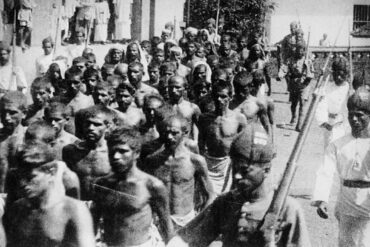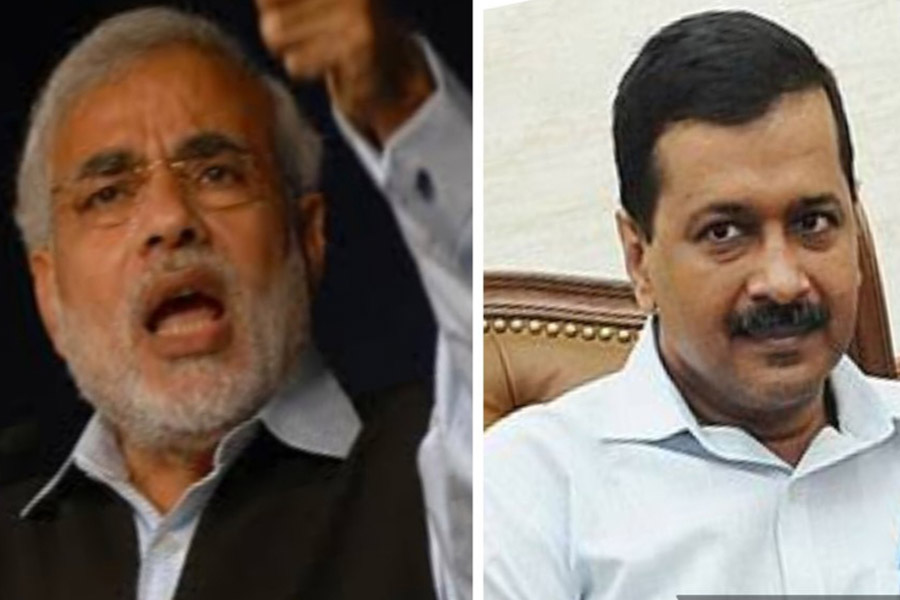In the early part of his political career, Arvind Kejriwal conjured up visions of a national role for himself, perhaps similar to what Narendra Modi has been doing. At least, this is what his actions suggested. He launched a relentless attack on Modi, in and out of context, but always ended up as the big loser, earning derision and ridicule.
Arvind Kejriwal and Narendra Modi are, of course, two different personas altogether. Modi is charismatic and wields the power to move the masses with his one word or a single gesture. Kejriwal at his best is a clumsy politician, who can’t impress even in a one-to-one conversation. That much for a comparison.
But thanks to a few election debacles, Kejriwal learnt his lessons, particularly the grammar of modern day politics. In recent times, Modi bashing ceased to be his favourite pastime and he carefully avoided personal attack against the Prime Minister. In fact, the man who has always been an unlikely politician has of late preferred to keep mum even when he was widely expected to express himself. Kejriwal refused to speak even on such vital issues as the scrapping of Article 370, CAA-NRC and even the Supreme Court verdict in the Ayodhya case, all powering BJP’s ideological ballasts. The approach seems to have helped his as well as his party’s cause in no small measure.
While no man in his senses would ever compare the two leaders, Delhi’s people seem to have done just that. The election results provide the opportunity to pit Modi and Kejriwal against each other, not as politicians, but as captains of the governments that they lead. And that makes Kejriwal’s day, for a change. The equation that defines performances puts the former revenue officer ahead: Modi delivered speeches and promises while Kejriwal produced results and numbers. Kejriwal scores over Modi as an administrator in control of the situation.
In fact, Kejriwal has thundered back to power in Delhi for a hat-trick the same way Modi steamrolled his opposition to claim a second term.
The Aaam Aadmi Party’s spectacular electoral performance is an endorsement by the people of Delhi for the good work done by the Kejriwal government, in spite of the central government breathing down its neck and intimidating it in all possible ways. The Centre’s arm-twisting of the Kejriwal government with the help of the Lt Governor, who acted as the agent of Union Home Ministry rather than as a constitutional head, nauseated Delhi’s people.
People have rewarded the AAP government for its good work. Quality education and healthcare for all, affordable electricity and piped water supply for every household are things that touch the lives of common people. Despite all his failings as a politician, Kejriwal has managed to address the basic needs of the people, for which the voters have responded with a third term for him.
The party’s report card for the past five years it has been in power put things in perspective. Delhi’s successive governments had built 17,000 new classrooms in 70 years, but the AAP government added 20,000 classrooms in 60 months. The Higher Education and Skill Development Guarantee Scheme provided for Delhi students to avail of loans of up to Rs 10 lakh without any collateral, which brought higher education within reach of large number of people who could never afford proper education to their wards before.
Kejriwal’s path-breaking initiative to set up more than 400 mohalla clinics transformed the capital’s health infrastructure, taking hospitals and laboratories close to where people lived. Free medicines, treatments, tests, and surgeries in all the Delhi government hospitals turned out to be such a game changer that private practitioners had to come down to earth to be able to survive. They could no longer fleece their victims the way have been doing so far.
Delhi residents don’t have to pay for their electricity if consumption is below 200 units and have to pay half the price if they consume less than 400 units. Delhi power tariff is the cheapest among most large cities and there have been no power hikes in the past five years; distribution companies have been made accountable for uninterrupted power supply. Similarly, water supply has been made free of cost for low income households and most unauthorised colonies have been connected to piped water supply.
The doorstep delivery service scheme covering 40 public services, launched after a long tussle with the L-G, turned out to be demonstrable dose of good governance, reducing bureaucratic tyranny and inconvenience to public.
Though the results have shocked the BJP, the emphatic AAP victory is no real surprise as exactly the same thing had happened with Modi in 2019. What made the Modi come-back possible was the economic promise coupled with the security issues. The results showed how Modi’s programmes such as Swachh Bharat, Ujjwala, Kisan Yojana, Ayushman Bharat etc was well received.
It is a different matter that the Modi government is now going off on a tangent, covering real issues with its ideological smokescreen. Maybe, it is already time for the saffron party in taking a few refresher courses, which the people of this country have become masters in tutoring.
By arrangement with IPA







